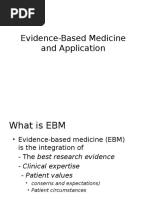The bestselling nursing care planning book on the market, Nursing Care Plans: Diagnoses, Interventions, and Outcomes, 8th Edition covers the most common medical-surgical nursing diagnoses and clinical problems seen in adults. It includes 217 care plans, each reflecting the latest evidence and best practice guidelines. NEW to this edition are 13 new care plans and two new chapters including care plans that address health promotion and risk factor management along with basic nursing concepts that apply to multiple body systems. Written by expert nursing educators Meg Gulanick and Judith Myers, this reference functions as two books in one, with 147 disorder-specific and health management nursing care plans and 70 nursing diagnosis care plans to use as starting points in creating individualized care plans.

Treatment for compulsive gambling may involve an outpatient program, inpatient program or a residential treatment program, depending on your needs and resources. Treatment for substance abuse, depression, anxiety or any other mental health disorder may be part of your treatment plan for compulsive gambling. Z72.6 is a billable/specific ICD-10-CM code that can be used to indicate a diagnosis for reimbursement purposes. The 2021 edition of ICD-10-CM Z72.6 became effective on October 1, 2020. This is the American ICD-10-CM version of Z72.6 - other international versions of ICD-10 Z72.6 may differ. Co-occurring mental illness or substance use disorders: Mayo Clinic notes that compulsive gambling is more common among people who have a co-occurring mental health diagnosis — such as depression, bipolar disorder, or anxiety — or a substance use disorder. Gambling is a billion dollar industry that is growing by the year. Yes, most people can enjoy an occasional visit to a casino, participate in an office betting pool or buy weekly lottery tickets. Asian Americans & Problem Gambling Gambling Among Chinese Adults in San Francisco: 14.5% meet criteria for problem gambler, 21% meet criteria for pathological gambler (Wong and Toy, 1999) Pathological Gambling Amon g University Students: 12.5% among APIs vs. 4-5% among African-American, whites, American Indians vs. 11% among Latinos.
- 217 care plans --- morethan in any other nursing care planning book.
- 70 nursing diagnosis care plans include the most common/important NANDA-I nursing diagnoses, providing the building blocks for you to create your own individualized care plans for your own patients.
- 147 disorders and health promotion care plans cover virtually every common medical-surgical condition, organized by body system.
- Prioritized care planning guidance organizes care plansfrom actual to risk diagnoses, from general to specific interventions, and from independent to collaborative interventions.
- Nursing diagnosis care plans format includes a definition and explanation of the diagnosis, related factors, defining characteristics, expected outcomes, related NOC outcomes and NIC interventions, ongoing assessment, therapeutic interventions, and education/continuity of care.
- Disorders care plans format includes synonyms for the disorder (for easier cross referencing), an explanation of the diagnosis, common related factors, defining characteristics, expected outcomes, NOC outcomes and NIC interventions, ongoing assessment, and therapeutic interventions.
- Iconsdifferentiate independent and collaborative nursing interventions.
- Student resources on the Evolve companion website include36 of the book's care plans - 5 nursing diagnosis care plans and 31 disorders care plans.
Nursing Diagnosis For Gambling Disorders

Nursing Diagnosis For Binge Eating
- Three NEW nursing diagnosis care plans include Risk for Electrolyte Imbalance, Risk for Unstable Blood Glucose Level, and Risk for Bleeding.
- Six NEW health promotion/risk factor management care plans include Readiness for Engaging in a Regular Physical Activity Program, Readiness for Enhanced Nutrition, Readiness for Enhanced Sleep, Readiness for Smoking Cessation, Readiness for Managing Stress, and Readiness for Weight Management.
- Four NEW disorders care plans includeSurgical Experience: Preoperative and Postoperative Care, Atrial Fibrillation, Bariatric Surgery, and Gastroenteritis.
- NEWHealth Promotion and Risk Factor Management Care Planschapter emphasizes the importance of preventive care and teaching for self-management.
- NEW BasicNursing Concepts Care Planschapter focuses on concepts that apply to disorders found in multiple body systems.
- UPDATED care plans ensure consistency with the latest U.S. National Patient Safety Goals and other evidence-based national treatment guidelines.
- The latest NANDA-I taxonomy keeps you current with 2012-2014NANDA-I nursing diagnoses, related factors, and defining characteristics.
- Enhanced rationales include explanations for nursing interventions to help you better understand what the nurse does and why.